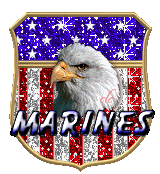
On November 10, 1775, the Continental Congress meeting in Philadelphia passed a resolution stating that "two battalions of Marines be raised" for service as landing forces with the fleet. This resolution, sponsored by John Adams, established the Continental Marines and marked the birth date of the United States Marine Corps.
Serving on land and at sea, these first Marines distinguished themselves in a number of important operations, including their first amphibious raid into the Bahamas in March 1776, under the command of Captain (later Major) Samuel Nicholas. Nicholas, the first commissioned officer in the Continental Marines, remained the senior Marine officer throughout the American Revolution and is considered to be the first Marine Commandant.
The Treaty of Paris in April 1783 brought an end to the Revolutionary War and as the last of the Navy's ships were sold, the Continental Navy and Marines went out of existence.
Following the Revolutionary War and the formal re-establishment of the Marine Corps on July 11, 1798, Marines saw action in the quasi-war with France (1798-1800), landed in Santo Domingo (1800) and took part in many operations against the Barbary pirates along the "Shores of Tripoli" (1801-1815).
Marines participated in numerous naval operations during the War of 1812, as well as participating in the defense of Washington at Bladensburg, Maryland (1814) and fought alongside Andrew Jackson in the defeat of the British at New Orleans (1815). The decades following the War of 1812 saw the Marines protecting American interests around the world, in the Caribbean (1821-1822), at the Falkland Islands (1832), Sumatra (1831-1832), and off the coast of West Africa (1820-61), and also close to home in the operations against the Seminole Indians in Florida (1836-1842).
During the Mexican War (1846-1848), Marines seized enemy seaports on both the Gulf and Pacific coasts. While landing parties of Marines and sailors were seizing enemy ports along the coast, a battalion of Marines joined General Scott's army at Pueblo and marched and fought all the way to the "Halls of Montezuma," Mexico City.
Marines served ashore and afloat in the Civil War (1861-1865). Although most service was with the Navy, a battalion fought at Bull Run and other units saw action with the blockading squadrons and at Cape Hatteras, New Orleans, Charleston, and Fort Fisher. The last third of the 19th century saw Marines making numerous landings throughout the world, especially in the Orient and in the Caribbean area.
In World War I the Marine Corps distinguished itself on the battlefields of France as the 4th Marine Brigade earned the title of "Devil Dogs" for heroic action at Belleau Wood, Soissons, St. Michiel, Blanc Mont, and in the final Meuse-Argonne offensive (1918). Marine aviation which dates from First Lieutenant Alfred A. Cunningham beginning aviation training in the summer of 1912, also played a part in the war effort, flying day bomber missions over France and Belgium. More than 30,000 Marines had served in France and more than a third were killed or wounded in six months of intense fighting.
During the two decades before World War II, the Marine Corps began to develop in earnest the doctrine, and organization needed for amphibious warfare. The success of this effort was proven first on Guadalcanal, then on Bougainville, Tarawa, New Britain, Kwajalein, Eniwetok, Saipan, Guam, Tinian, Peleliu, Iwo Jima, and Okinawa. By the end of the war in 1945, the Marine Corps had grown to include six divisions, five air wings, and supporting troops. Its strength in World War II peaked at 485,113. The war had cost the Marines nearly 87,000 dead and wounded and 82 Marines had earned the Medal of Honor.
 Marine's Hymn History
Marine's Hymn History






 Marine's Hymn History
Marine's Hymn History